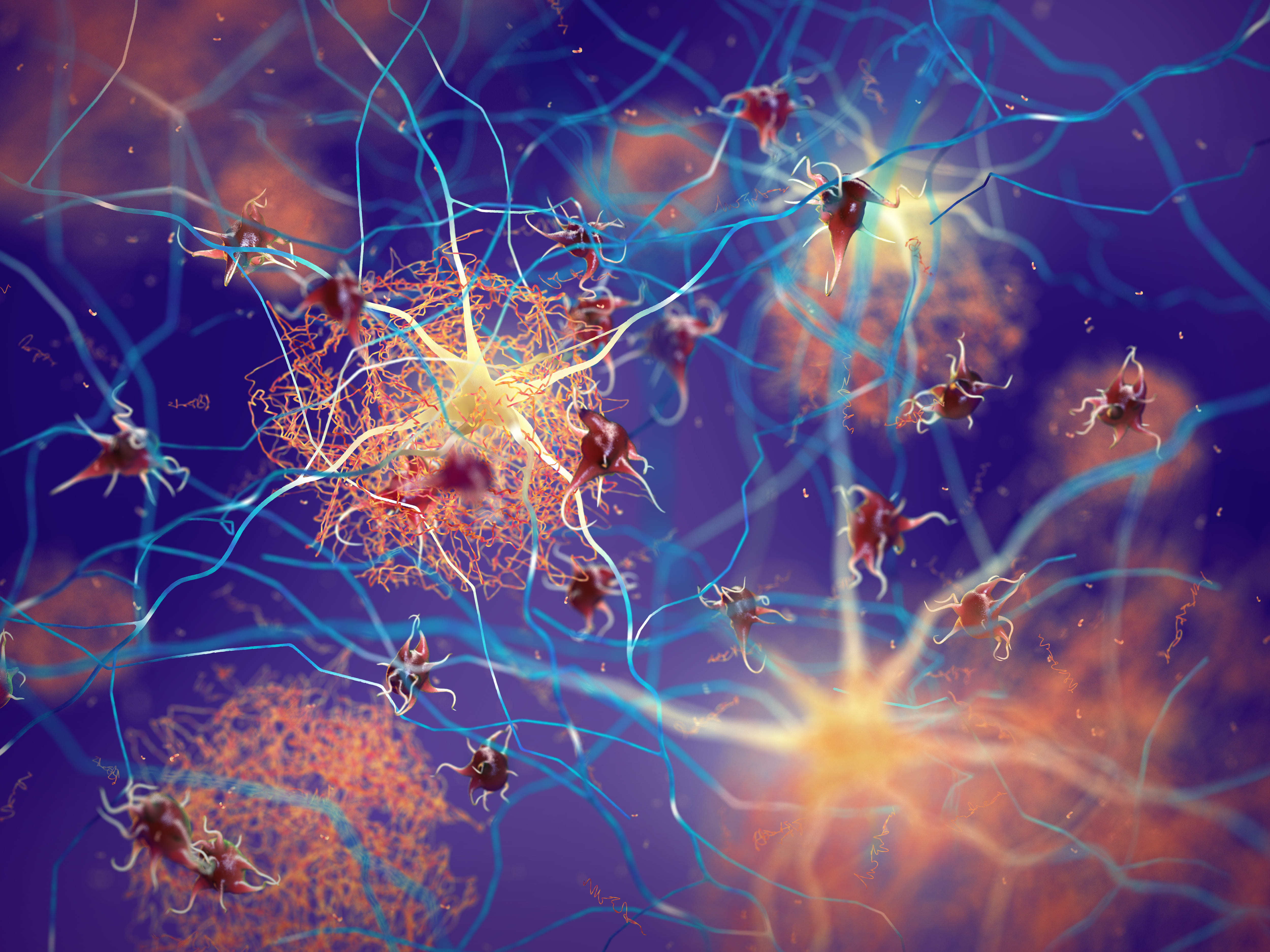This narritive has been grinding along for decades to little effect. Aluminium is never really by itself and mobile only as an oxidant mostly. Is it more risky than rust?
Inasmuch as we evolved with no end of Al complexes in nature, it is hard to take any of the claims too seriously. And over half a century, the science remains unsettled. Perhaps aluminum dust from the sahara needs to push global warming.
Even the known associations are actually low level linkages and likely not prove of causation. I have a better chance with Round up.
Aluminum: The Brain Toxin Found Everywhere, Ways to Remove
Jan 6 2023
https://www.theepochtimes.com/health/aluminum-the-brain-toxin-found-everywhere-ways-to-remove_4957425.html?u
Aluminum enters our bodies naturally through some plants as well as through cookware, drugs, vaccines, food packaging, and more. JasminkaM/Shutterstock
Feeling confused, weak, or losing your memory and concentration?
You may be suffering from aluminum toxicity.
Aluminum is an omnipresent metal, found not only in your cookware—as most people already know—but also in vegetables, water, meat, and even vaccines and drugs.
Aluminum accumulates in your organs—especially the brain.
Aluminum Is Omnipresent
Sitting behind oxygen and silicon, aluminum is the third-most prevalent element in the natural environment and the most prevalent elemental metal in the earth’s crust.
Aluminum is highly reactive and soluble. It’s in the air, soil, water, and plants that absorb the water, including common vegetables. It’s therefore also in the animals that eat the plants.
Plants such as spinach, tea, and some herbs and spices are naturally high in aluminum.
Some plants benefit from aluminum. Tea plants, for example, rely on aluminum as an essential nutrient for growth. The place where aluminum is stored in plants can also affect how much aluminum we are exposed to. Spinach and tea, for example, tend to store aluminum in the leaves.
In man-made products, aluminum is everywhere.
It’s particularly favored in manufacturing as a form of wrapping and packaging, as it’s very malleable and conductive to heat and electricity.
It’s in cooking utensils such as aluminum foils and pans. Since aluminum dissolves more readily in acidic solutions, when aluminum foil is cooked with acidic products such as tomatoes, it can cause greater aluminum content in the food.
Aluminum stimulates the immune system. It’s toxic and stimulates specific immune cells, creating a stronger immune response. Therefore, some vaccinations contain aluminum as adjuvants to enhance effectiveness. Vaccines that contain aluminum include those for hepatitis A and B, diphtheria-tetanus containing vaccines, measles, mumps, rubella, rubella, varicella, rotavirus, and many more.
Depending on the aluminum molecule, its presence can induce a slower release of drugs and even neutralize acids. It’s, therefore, also found in common pharmaceutical products such as aspirin, antacids, phosphate binders, and dialysis fluid.
In cosmetic products, aluminum is in mineral sunscreens to prevent the loss of titanium, which helps the skin to block out the sun, it’s present in many known brands of makeup, included as an antiperspirant in deodorants, and added to emulsify facial and body creams.
Aluminum, particularly aluminum in commercial antiperspirants, may also be a significant factor in the ubiquity of breast cancer. (wavebreakmedia/Shutterstock)
Aluminum complexes are also used extensively in processed food. It’s a raising agent in baking soda and an emulsifier in many processed cheeses.
According to the Agency for Toxic Substances and Disease Registry, a healthy person can tolerate from 5 to 10 milligrams per kilogram of aluminum.
Since 2000, the U.S. Food and Drug Administration has implemented a rule that intravenous nutrition and pharmaceuticals that contain aluminum, including dialysis and vaccinations, must have a warning label, stating that for people with impaired renal function, such as premature infants, “parenteral levels of aluminum at greater than 4 to 5 micrograms/kilogram/day accumulate aluminum at levels associated with the central nervous system and bone toxicity.”
Vaccines generally contain no greater than 0.85 milligrams/dose, and some studies indicate that the body clears out most of them. Other products also generally have very low levels of aluminum with low bioavailability.
However, when you use many aluminum-containing products, the amount you’re exposed to can surpass the body’s excretory capacity—it’s then that aluminum can accumulate and symptoms begin to manifest.
Our human bodies have no use for aluminum. Aluminum actually disturbs and impedes the natural flow of the body’s mechanism.
Aluminum and Alzheimer’s Disease
In 1965, the aluminum hypothesis was kicked off by a Polish study, which postulated that aluminum contributes to Alzheimer’s disease.
The hypothesis reasons that Alzheimer’s is a disease of old age because the older a person is, the greater the exposure to aluminum, the greater the aluminum accumulation.
Three scientists found that injecting aluminum into rats’ brains caused the fibers in their neurons to degrade and form tangle-like structures that are commonly seen in Alzheimer’s disease patients.
Another 1973 study collected brain samples from people who died with Alzheimer’s. The study found higher levels of aluminum in the brains of people who died with Alzheimer’s than in people who died of other conditions.
However, in larger group studies, the findings have been a bit more conflicted.
One analysis found that exposure to more than 100 micrograms of aluminum per liter in drinking water or occupational exposure increased the risk of Alzheimer’s by 71 percent. A 2011 review evaluated 13 studies on high aluminum levels in drinking water and found nine of them demonstrated a correlation between Alzheimer’s and high aluminum levels.
However, a large analysis has found that though aluminum exposure may pose a risk factor, it’s less significant compared to other factors such as physical inactivity, depression, and Type 2 diabetes.
Amyloid plaques forming between neurons. (Shutterstock)
In July 1988, 20 tons of aluminum sulfate was accidentally discharged into drinking water tanks that supplied the town of Camelford, England. This incident increased the aluminum concentration of drinking water by more than 500 times the allowable limit, and as a result, 20,000 people were exposed to very high concentrations of aluminum from their water supply.
The UK government followed the population over the years, intending to investigate the health impacts of the water contamination. The government later concluded that there was no proof relating the 1988 Camelford accident to later health impacts.
However, several studies published several years later described the cognitive and neurological decline of some people in the town.
One example told of a 49-year-old man, who started to suffer from memory loss six years after the accident. His memory problems worsened after five years along with dysphasia, hallucinations, and jerks. He died at the age of 69. Post-mortem analysis showed that he’d suffered from myriad neurodegenerative diseases, including Alzheimer’s disease, and high aluminum levels were also found in the rear region of the brain.
Aluminum Is a Neurotoxin
Aluminum mainly comes in the form of a compound such as aluminum hydroxide and aluminum citrate, rather than the pure metal.
When aluminum is in these compounds, the metal has a highly reactive plus-3 charge. It’s highly oxidative and potentially destructive.
Not all aluminum is absorbed equally. Elemental aluminum is absorbed very poorly in the gut, but aluminum citrate can easily cross the gut and enter the brain, said a senior researcher at the Massachusetts Institute of Technology, Stephanie Seneff.
In the central nervous system, aluminum activates genes that reduce neural energy and activity, increase inflammation, and promote neural dysfunction and even death.
Aluminum also reduces neural growth and can accelerate the formation of tau proteins commonly found in Alzheimer’s disease.
Aluminum may react with lipids that form the boundaries of cells causing the lipids to degrade. These cells then lose their boundaries and become stressed, inflamed, and potentially die. This has been demonstrated in studies on brain cells from rats as well as from humans.
Another study found that aluminum also potentially damages the human “energy factory.”
In a laboratory study, the longer the neurons were exposed to aluminum, the greater the toxicity. After the neurons were exposed to aluminum for 48 hours, the neurons no longer had any mitochondrial activity. The mitochondria produce more than 90 percent of the energy the body and its cells need.
Aluminum also introduces changes to the human DNA, predisposing these cells to cancer.
Further, aluminum has been shown to cause neuroinflammation by killing and activating astrocytes. These are “cleaners of the brain,” mopping up debris and dead neurons. When overactivated, however, they start destroying neurons.
It’s unsurprising that aluminum exposure is linked with memory loss and cognitive decline.
Aluminum is strongly associated with dementia and encephalitis (neuroinflammation) as a result of aluminum toxicity from dialysis in renal-impaired patients.
Many studies have also linked aluminum exposure to other neurodegenerative diseases such as Parkinson’s disease and amyotrophic lateral sclerosis, though research has been contradictory.
Symptoms of “very early dementia” include forgetfulness, losing one’s temper because of this, not recognizing there is a problem, and at the same time being unwilling to seek medical treatment. (Shutterstock)
Environmental toxicologist Albert Donnay wrote to The Epoch Times that he thinks the correlation exists.
“[Amyotrophic lateral sclerosis] killed my brother Robert J. Donnay and many other men that fought in the Korean war,” Donnay wrote.
Data from the U.S. Department of Veteran Affairs has shown that veterans deployed to World War II or the Korean War have the highest rate of amyotrophic lateral sclerosis, however, a cause hasn’t been identified.
“Some researchers including me believe the cause is high exposure to aluminum from cooking pots, mess kits everyone ate from, and the canned food they ate,” which was a lot of tomato products that leached out aluminum, wrote Donnay.
Diagnosing and Symptoms of Aluminum Toxicity
Common neurological signs of aluminum toxicity include confusion, seizures, muscle weakness, and speech problems. In children, this also includes slow growth.
In extreme cases, middle-aged people have reported brain fog and dementia-like symptoms, which would be considered abnormal for the age group.
However, these symptoms are shared across many ailments. Internal and integrative medicine practitioner Dr. Ana Mihalcea told The Epoch Times that it can be difficult for physicians to come to a diagnosis.
“One of the problems with heavy metals is that they have synergistic, toxic effects,” Mihalcea said. “We’re not just exposed to aluminum, we’re exposed to lead, arsenic, cadmium, all kinds of other things.”
“If you then get larger and larger amounts in the body, then the toxicity is increased.”
Mihalcea said that many of her patients presenting to her with a form of metal toxicity would have high levels of toxic metals in their blood overall.
In fact, toxic metals such as arsenic and lead are still quite prevalent in the soil and water. Some water pipes in use in the United States are still made of lead, and homes built prior to the 1970s also likely used leaded paint.
Since lead and aluminum are both neurotoxins, the two toxic metals can work in synergy with each other to worsen each other’s impact.
How to Remove Aluminum
A common treatment option for aluminum toxicity is chelation.
The patient is given drugs, through a pill or intravenously, that bind to the toxic metals. The drug and the metal are then excreted through the urine.
Chelation comes with some side effects, including burning at the injection site, nausea, headaches, and fever.
Since it can also be used to remove essential minerals from reaching toxic levels, chelation therapy may also reduce beneficial minerals.
Some food in the diet may be natural chelators, this includes vegetables that contain sulfur such as broccoli and garlic. Turmeric has also been suggested to contain natural chelating properties.
Insoluble dietary fiber such as wheat bran, vegetables, and whole grains may also remove toxic metals, as studies have shown that the greater the level of insoluble dietary fiber consumed, the lower the level of toxic metals in the blood.
Drinking silica-rich mineral water is also another way of removing aluminum from the body.
The silica in plants such as horsetail can be very helpful in removing aluminum. (Chamille White/Shutterstock)
Though aluminum and many toxic metals are hard to avoid, people can try to reduce their overall exposure by taking steps to avoid aluminum-containing products and choosing products without aluminum.
Taking supplements such as vitamins A, C, and D to support the gut microbiome may also help.
The gut serves as the first line of defense against food and drinks that contain many toxic metal products, and therefore it must be supported so that toxic metals ingested can be cleared out.





No comments:
Post a Comment